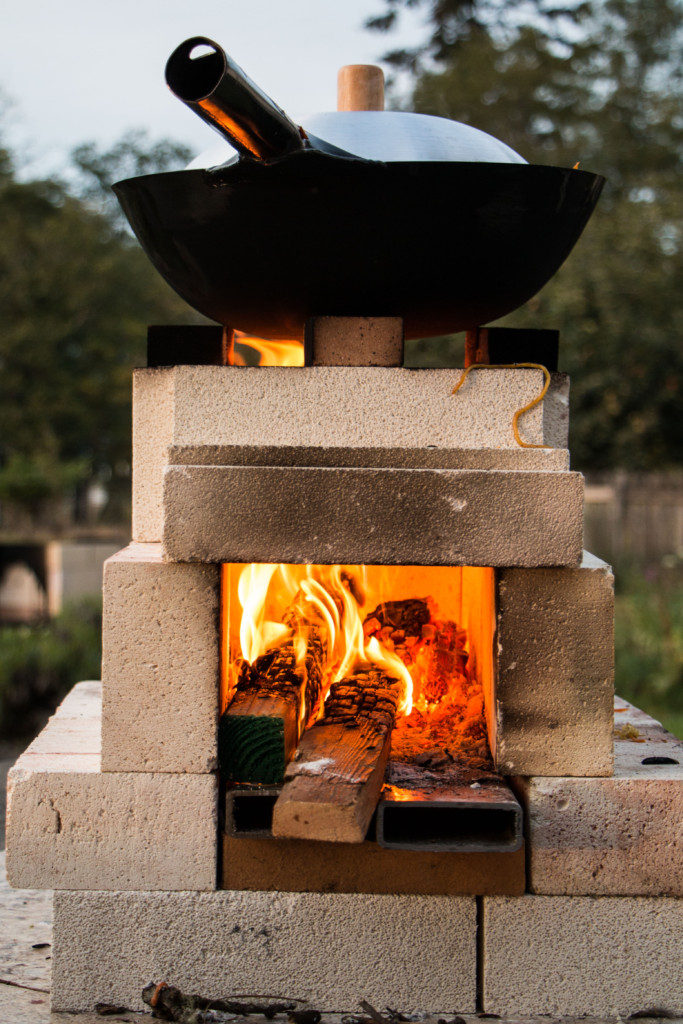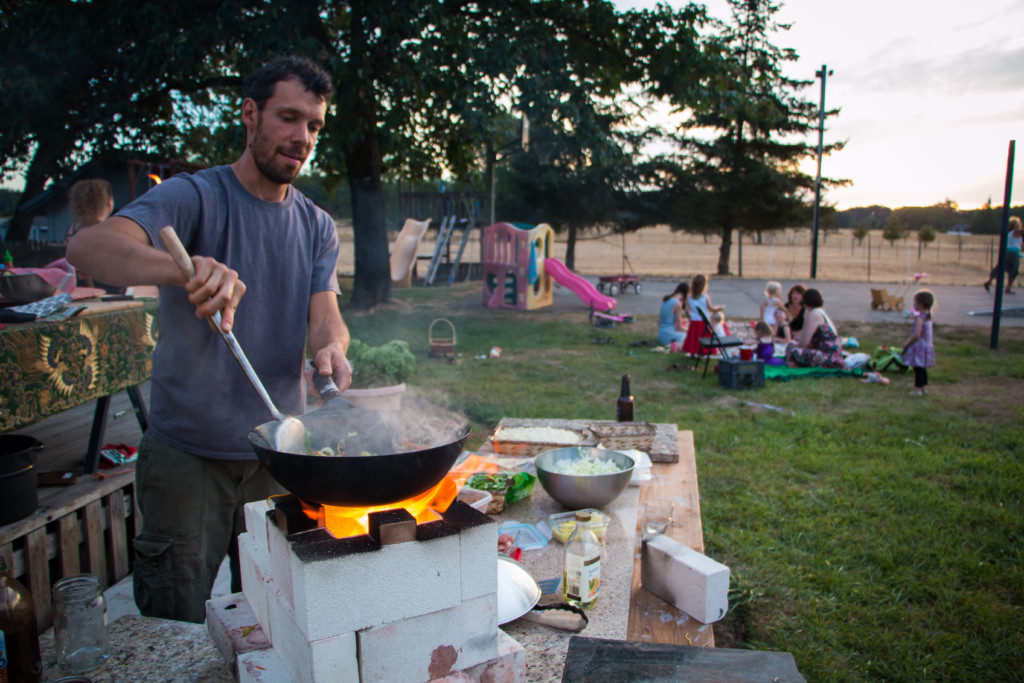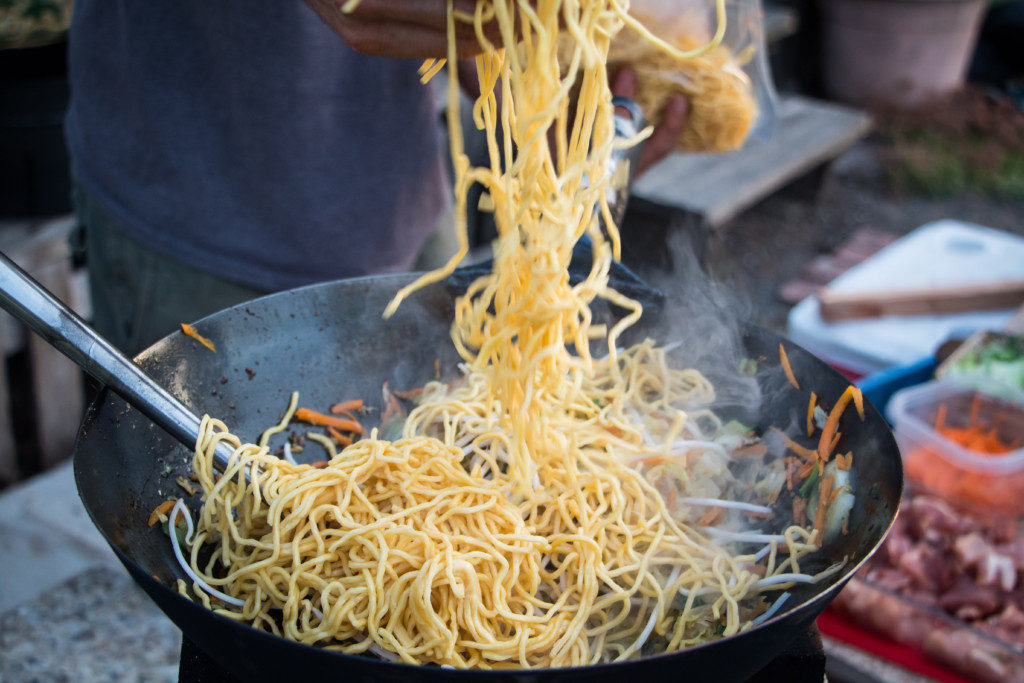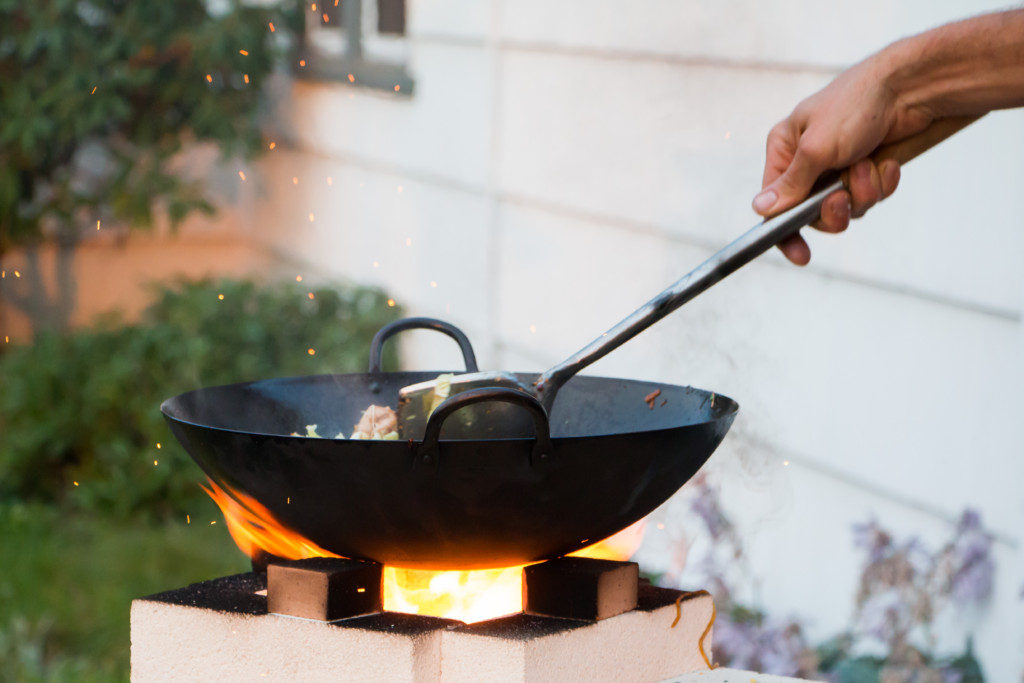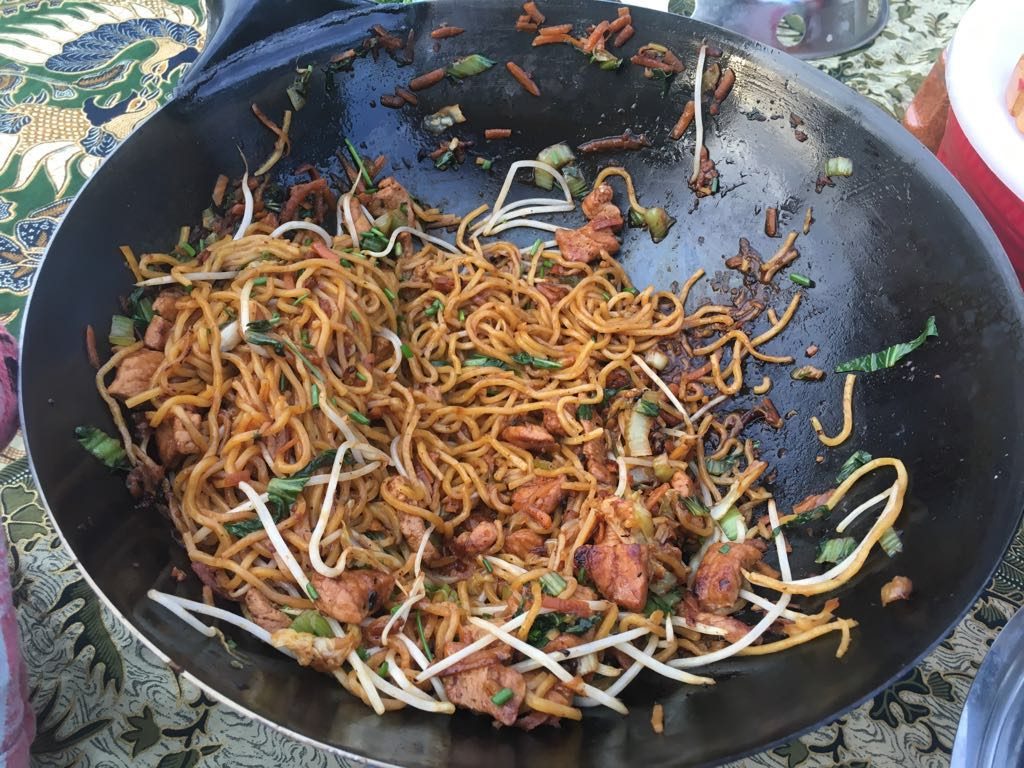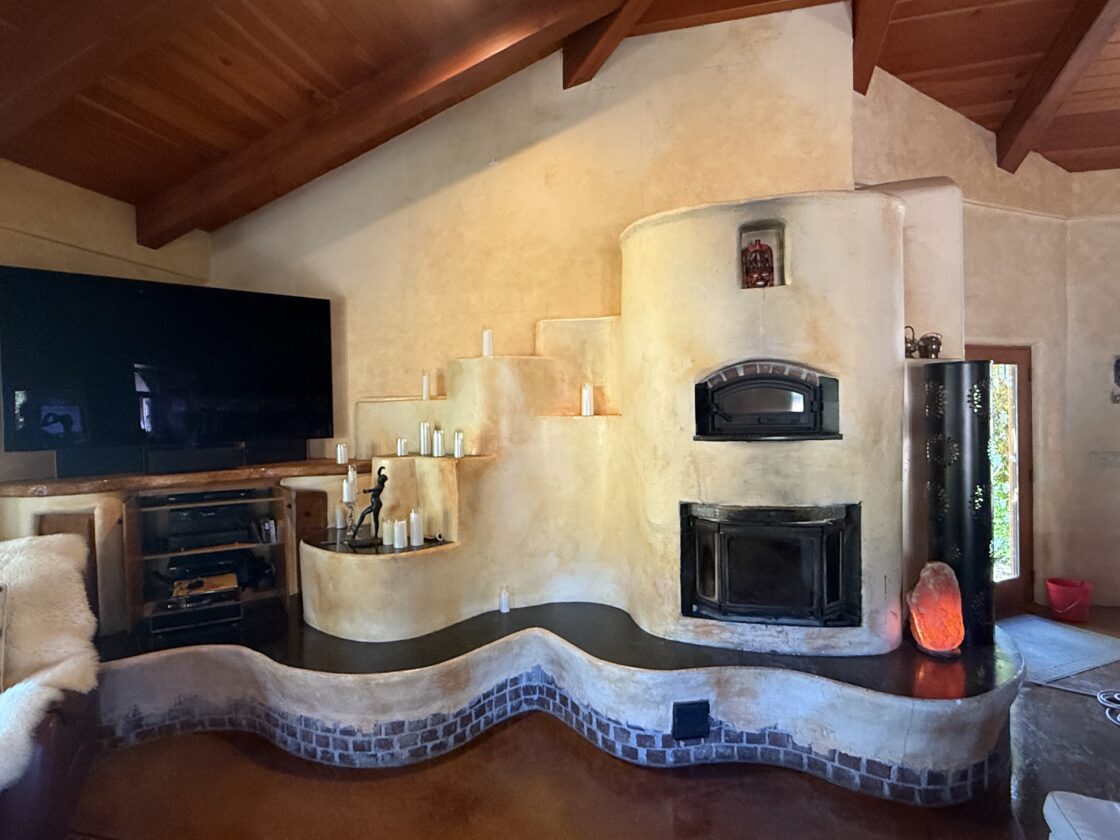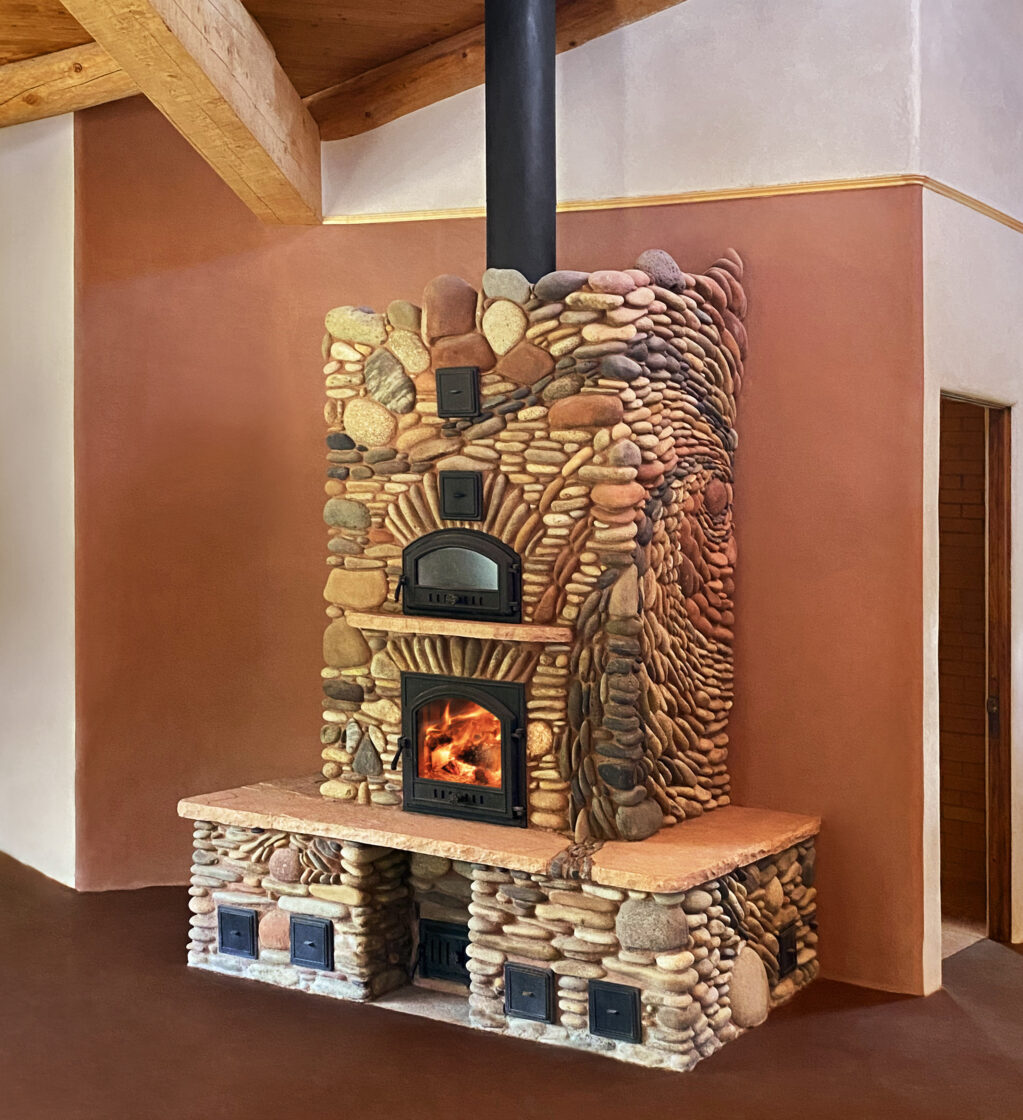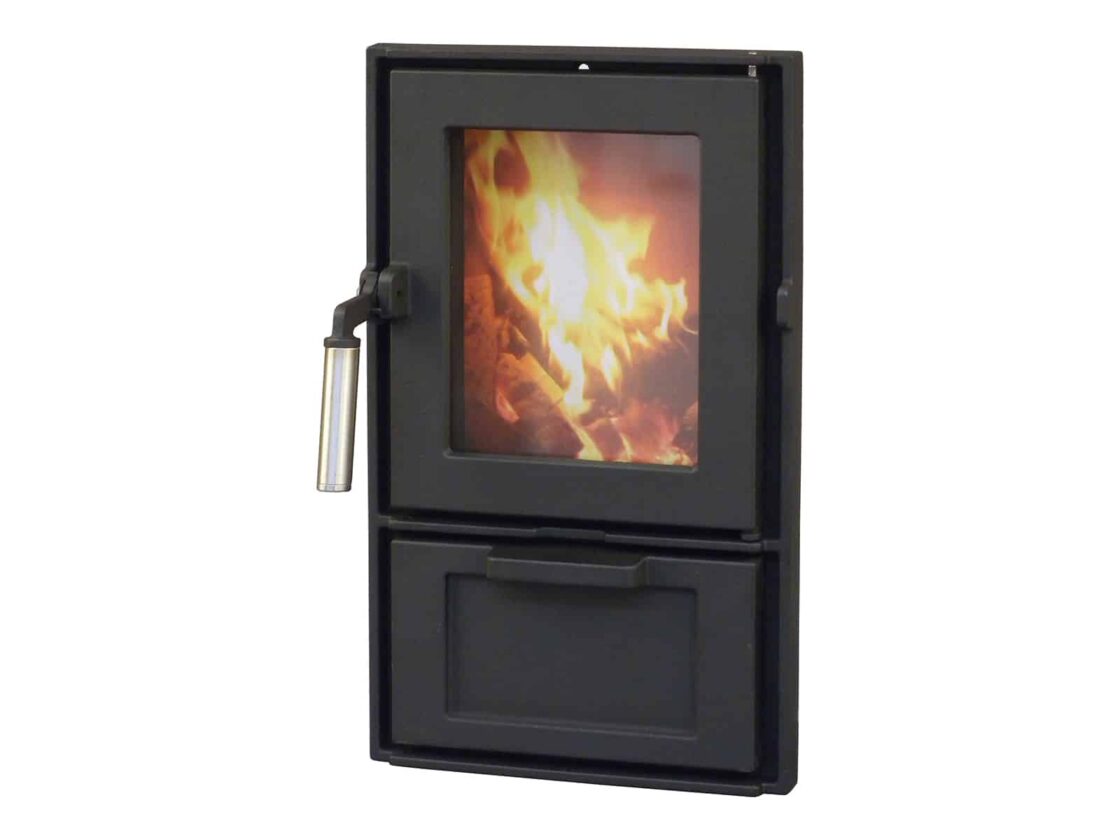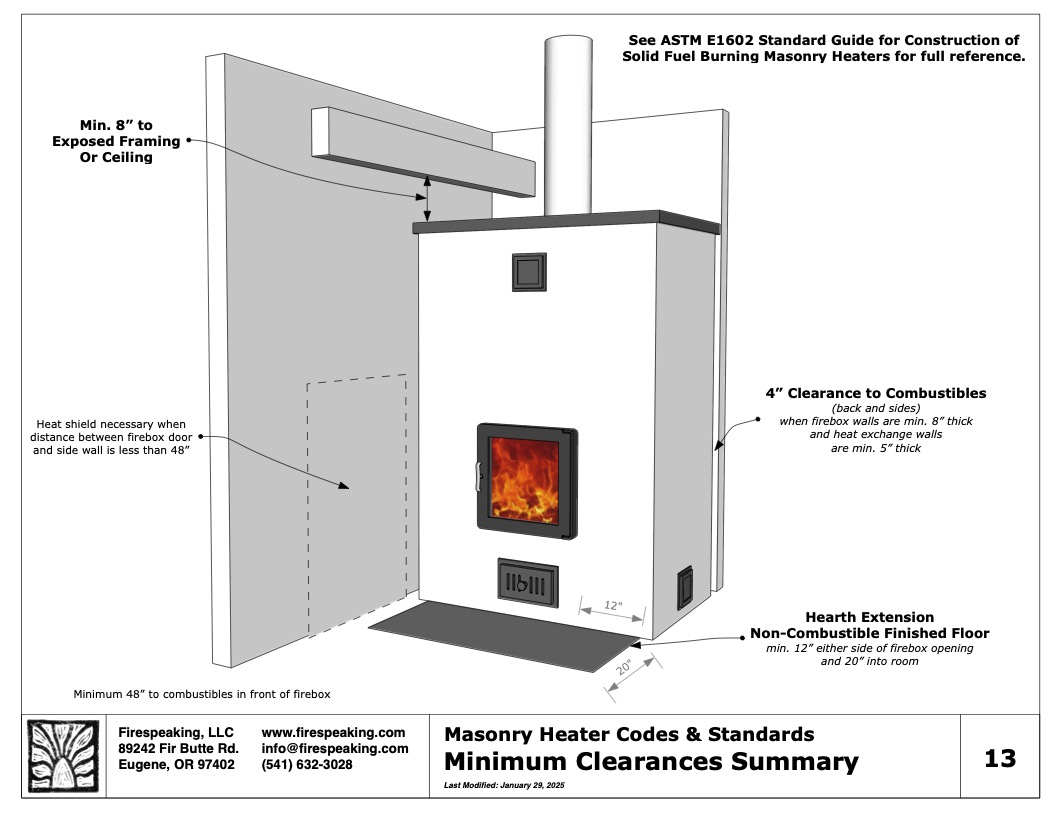For wood-fired cooking enthusiasts, the wood-fired “wok-et” is a great and simple addition to outdoor culinary celebration. It has become a summer tradition for us to throw “Yakisoba parties” where the intense heat produced by this unit allows us to quickly cook batch after batch of this tasty complete meal!
There are now quite a few commercial versions of this kind of stove, generally categorized as “rocket stoves” for their lively and clean combustion. Being stove builders ourselves, we had to make our own, of course! The L-shaped combustion chamber and insulative ceramic materials used are both defining characteristics of a rocket stove. Ours is dry stacked while we continue to study its performance and function. For now, we have chosen the simplest design given the insulative brick units that we have. The two rectangular pieces of steel administer heated secondary air underneath the fuel to the front of the fire and provide the coals with oxygen resulting in a very potent burn rate. It is surprising how little fuel is used and also how easy it is to maintain a constant flame.
The asian wok evolved to maximize heat exchange between the cooking fire, the pan, and the ingredients cooking. Wok cooking is characterized by high heat and constant movement of the ingredients. This is efficient in terms of minimal fuel use and tends to provide an excellent taste to the food which is neither seared nor braised but contains the sensations of both processes. For Eva’s birthday, we followed this relatively simple recipe: Yakisoba with Pork and Cabbage.
Photos and video in this article by Alex Rosenthal, except last image by Eva Edleson.
If you liked this article and would like to stay in touch, consider joining our mailing listand/or send us a noteto let us know your thoughts! Also, here is some further reading:
- Bibliography of Aprovecho Research Center, highlights:
- Cleaner Burning Rocket Stoves: Use a Fence? – this addresses a “tweak” that I may consider. I notice that while the fire always has a leading flame, the fire was tending to burn back and begin to burn more of the fuel than I would have expected in seeking a “cigar”-style burn. This article suggests that this is because most of the fuel is in a high high heat environment and therefore begins gasifying. The solution appears to be to consider reducing depth of insulated horizontal section.
- Design Principles for Wood Burning Cook Stoves
- Capturing Heat One – a classic! the first text I read on the subject.
- The MHA News – the news “blog” of the North American stove builders association.

